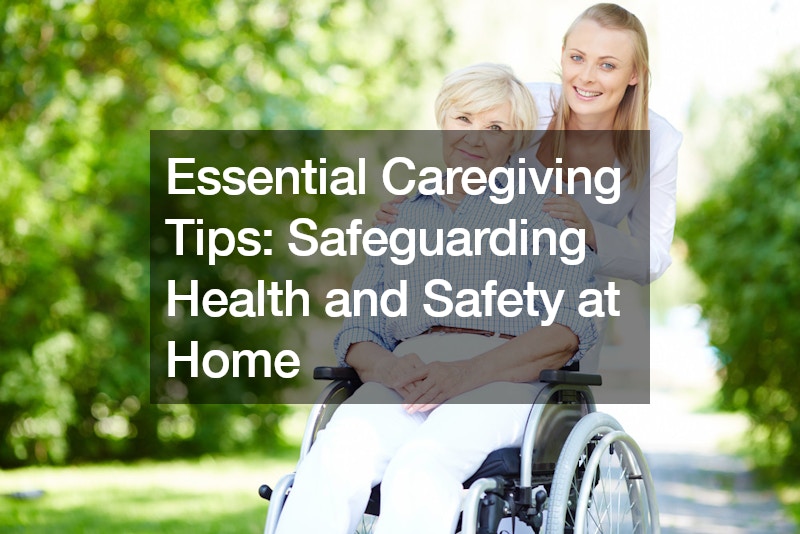
Providing care for elderly loved ones at home can be both rewarding and challenging. Ensuring their health and safety requires careful planning and attention to various aspects of daily living. Here are essential caregiving tips to help you create a safe and supportive environment for your elderly family member.
1. Medication Management
One of the cornerstones of elderly care is ensuring the safe and effective management of medications. Start by maintaining a comprehensive list of all medications your loved one takes, including dosages and schedules.
Regularly update this list to reflect any changes made by their healthcare provider. This detailed record is invaluable during medical appointments or emergencies, providing healthcare professionals with crucial information to make informed decisions.
2. Home Safety Modifications
Modifying the home environment is essential to enhance safety and accessibility for elderly individuals. Focus on areas prone to accidents, such as bathrooms and staircases. Install non-slip flooring in bathrooms and use grab bars near toilets and showers to assist with stability and movement. Remove rugs or carpets that could be tripping hazards, and rearrange furniture to create clear pathways for mobility aids such as walkers or wheelchairs.
Ensure adequate lighting throughout the house, especially in dimly lit areas and corridors used at night. Consider installing night lights in bedrooms and hallways to prevent falls during nighttime visits to the bathroom. These modifications significantly reduce the risk of accidents and promote independent living by creating a safer home environment.
3. Promoting Independence
Encouraging independence is vital for maintaining your loved one’s dignity and self-esteem. Support their ability to perform tasks they can manage, such as dressing themselves or preparing meals. Allow them the time and space needed, even if tasks take longer than they used to. Respect their preferences regarding personal care and daily routines, as this empowers them to maintain a sense of autonomy.
By fostering independence, caregivers can help alleviate feelings of helplessness or frustration that may arise from losing autonomy. This approach not only enhances their emotional well-being but also contributes to a more positive caregiving experience overall.
4. Caregiver Well-being
The role of a caregiver can be physically and emotionally demanding, making self-care essential to prevent burnout. Prioritize your own well-being by taking regular breaks, eating nutritious meals, and getting adequate sleep. Incorporate stress-relief techniques such as meditation, deep breathing exercises, or yoga into your daily routine to manage caregiver stress effectively.
Consider joining a caregiver support group or seeking assistance from family members or professional caregivers to share responsibilities. Taking care of your mental and physical health enables you to provide better care for your loved one and maintain a balanced lifestyle.
5. Safety Precautions
Implementing safety precautions within the home is crucial for preventing accidents and injuries. Secure rugs and carpets to the floor to prevent tripping hazards, and ensure all areas are well-lit to improve visibility, especially on staircases and in hallways. Keep commonly used items within easy reach to reduce the risk of falls when reaching for objects.
Regularly assess the home environment for potential safety hazards and make necessary adjustments to enhance overall safety. These proactive measures contribute significantly to creating a secure living environment for elderly individuals.
6. Social Engagement
Encouraging social engagement is vital for promoting mental and emotional well-being in elderly individuals. Arrange regular visits with friends, family members, or neighbors to combat feelings of loneliness and isolation. Consider enrolling them in community programs or senior centers where they can participate in social activities and interact with peers.
Maintaining social connections helps elderly individuals stay mentally stimulated and emotionally fulfilled. It also provides opportunities for them to share experiences and interests, contributing to a sense of belonging and overall happiness.
7. Managing Caregiver Stress
Caregiving often involves juggling multiple responsibilities, which can lead to stress and exhaustion. Practice self-care by prioritizing tasks, delegating responsibilities when possible, and setting realistic expectations. Engage in stress-management techniques such as mindfulness, relaxation exercises, or hobbies that bring you joy.
Seek support from other caregivers, family members, or professional counselors to discuss challenges and share experiences. Taking proactive steps to manage caregiver stress improves your overall well-being and enhances your ability to provide compassionate care.
8. Emergency Preparedness
Prepare for emergencies by maintaining a list of essential contacts, including healthcare providers, emergency services, and family members. Keep a readily accessible list of allergies, medical conditions, and medications to share during medical emergencies or hospital visits. Develop an emergency plan tailored to their specific health needs, ensuring you’re prepared for unforeseen situations.
Regularly review and update emergency plans with input from healthcare providers and family members to adapt to changing circumstances. Being prepared allows you to respond swiftly and effectively during emergencies, prioritizing your loved one’s safety and well-being.
9. Creating a Comfortable Living Environment
Creating a comfortable living environment is essential for promoting well-being and quality of life for elderly individuals. Maintain a comfortable temperature in the home, provide adequate heating or cooling depending on the weather conditions. Arrange furniture and decor to maximize space and ensure easy navigation, especially for mobility aids.
Personalize their living space with familiar belongings and meaningful decorations to create a sense of comfort and familiarity. This personalized environment enhances their emotional security and promotes a positive outlook on daily living.
10. Regular Health Assessments
Schedule regular health assessments and check-ups with their healthcare provider to monitor their overall health and well-being. These assessments should include screenings for chronic conditions, medication reviews, and assessments of physical and cognitive function. Regular health evaluations help detect any changes in their health early on, allowing for timely interventions and adjustments to their care plan.
Maintain open communication with healthcare providers to address any concerns or changes in their health status promptly. Monitoring their health ensures they receive the necessary medical attention and support to maintain optimal health and quality of life.
In conclusion, effective elderly care involves careful planning, attention to safety measures, and prioritizing both the physical and emotional well-being of your loved one and yourself. By implementing these essential caregiving tips, you can create a supportive environment that enhances their quality of life while ensuring their health and safety at home. Remember, each individual’s needs are unique, so tailor your caregiving approach to meet their specific requirements and preferences.
.








